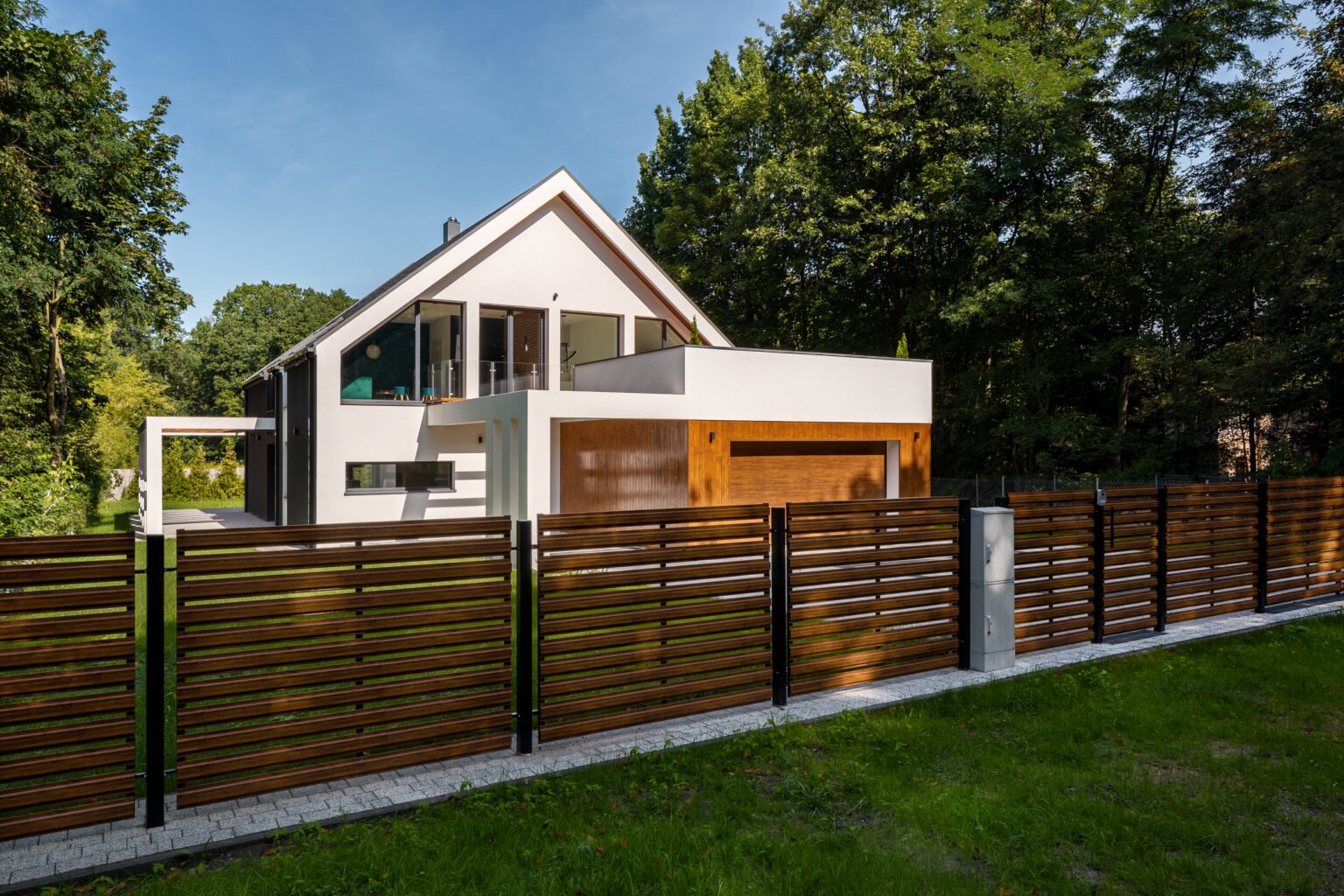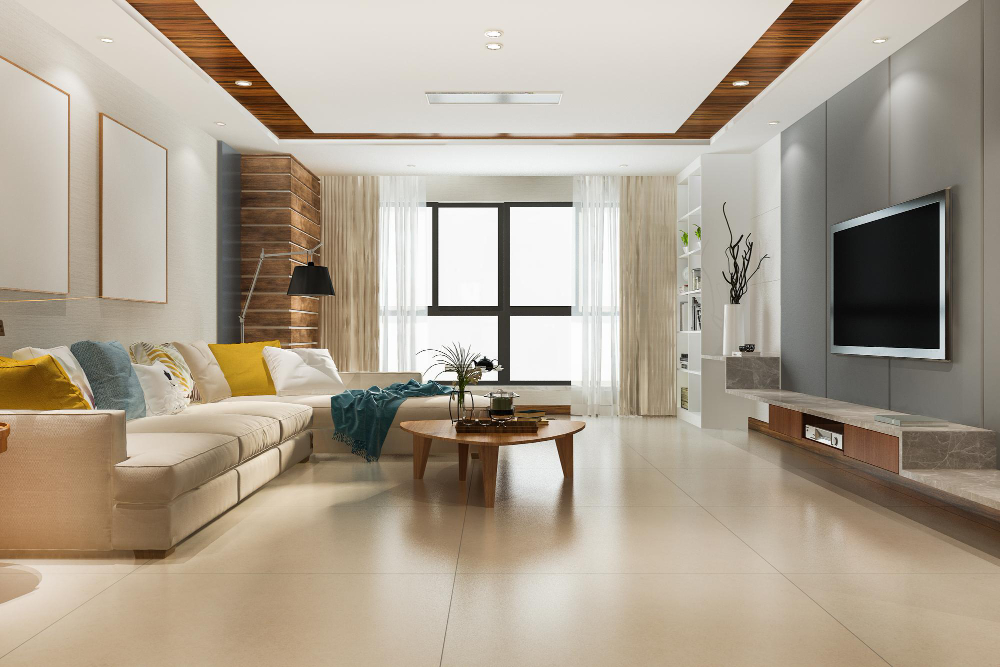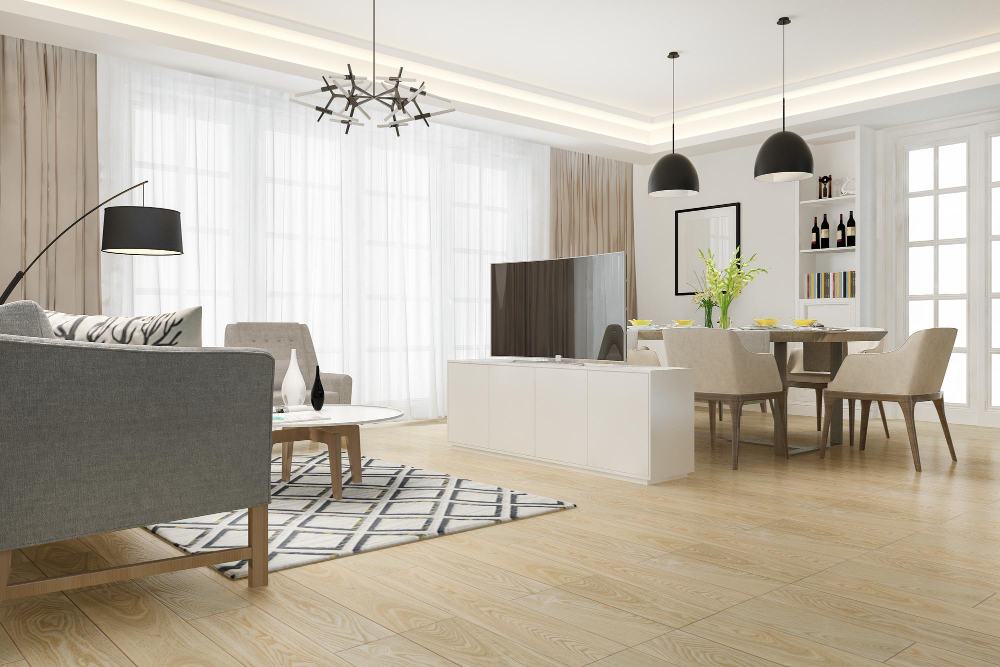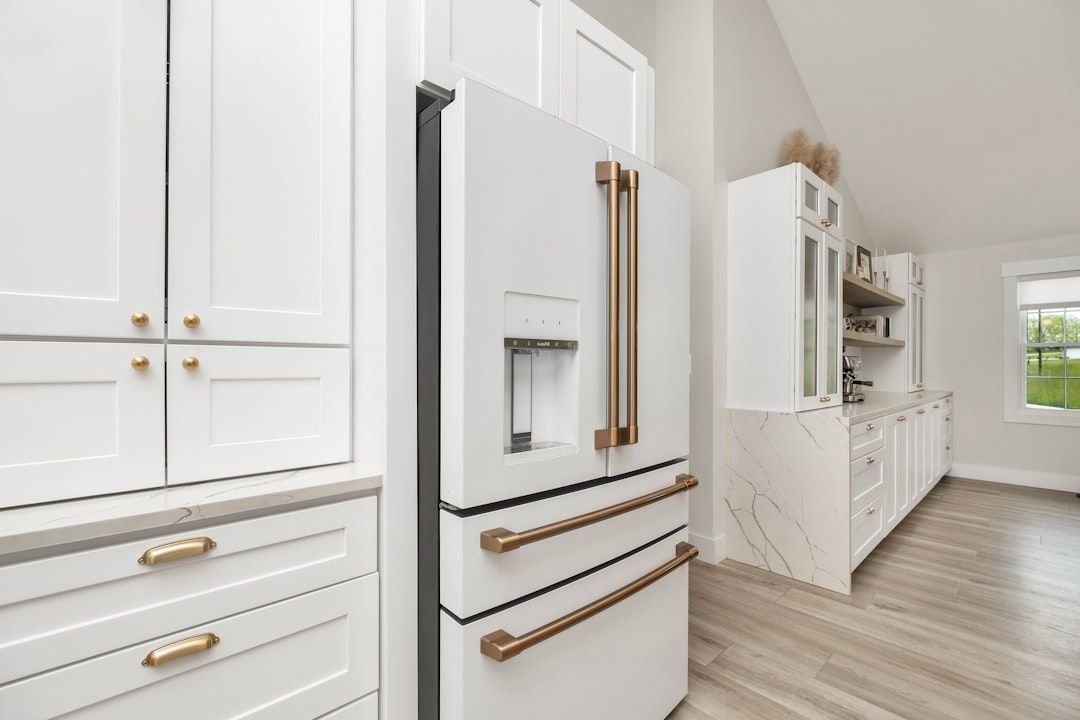How to Prepare Your Home for a Major Renovation in Los Angeles: A Step-by-Step Guide
Guide to Home Renovation in Los Angeles
Home renovation in Los Angeles is a popular venture as homeowners seek to improve their living spaces to reflect personal styles or increase property value. Whether you’re updating a single room or planning a large-scale overhaul, understanding the scope of your renovation project is critical. Knowing what you want to achieve helps set the foundation for a successful renovation journey.
Los Angeles, with its unique architectural styles and building regulations, presents both opportunities and challenges for homeowners. The city is renowned for its vibrant culture and diverse neighborhoods, each with its own charm and distinct architectural elements. An LA home renovation is not just about altering a living space—it’s about enhancing your lifestyle and adapting your home to meet your needs while preserving its unique identity.
How to Evaluate Renovation Needs and Goals
Before diving into a renovation project, it’s crucial to define your needs and goals. Ask yourself:
- Is the renovation to improve functionality?
- Do you want to update the design?
- Are you increasing your property’s resale value?
Clearly identifying your objectives will guide decision-making and help you prioritize tasks during the project.
Walk through every room in your home and assess what changes are necessary. Make a detailed list and categorize tasks based on priority. For example, an awkward kitchen layout or outdated bathroom fixtures might top the list. Not all changes have to be immediate—some can be phased in over time as budget allows.
Setting a Realistic Budget for Los Angeles Renovations
Creating a budget is one of the most critical steps. It involves estimating costs for materials, labor, permits, and unexpected expenses. In Los Angeles, labor rates and the high cost of living can significantly impact your budget. Allocate 10-15% of the overall budget for contingencies to avoid surprises.
Factors affecting costs include:
- Location and scope of work
- Quality of materials
- Permit requirements
Get quotes from multiple contractors and consult remodeling cost guides to estimate expenses. Consider financing options like home equity loans if the renovation exceeds your savings.
Finding Reputable Contractors in Los Angeles
Choosing the right contractor is crucial. Look for professionals with experience in local building codes and the type of renovation you’re planning. Use resources like Angie’s List or the Better Business Bureau to verify credentials and read reviews.
A trustworthy contractor should provide:
- Detailed contracts
- Clear timelines
- Transparent payment schedules
Interview multiple contractors, compare quotes, and establish communication protocols to ensure expectations are met throughout the project.
Understanding Los Angeles Building Codes and Permits
Renovating in Los Angeles requires adherence to local building codes and permit requirements. Ignoring these can lead to delays, fines, or even undoing completed work.
Obtaining Necessary Permits
Most renovations require permits, especially for structural changes, electrical work, plumbing, or altering the building footprint. Detailed plans, often prepared by an architect, must accompany your permit application. Submit these to your local Building and Safety Customer Service Center. Once reviewed and approved, you’ll receive the necessary permits.
Complying with Zoning Laws
Zoning laws dictate property boundaries, height restrictions, and permissible uses. For example, converting a garage into a living space must comply with specific regulations. Consult your local planning department or a zoning expert to ensure compliance.
Meeting Earthquake Safety Standards
Due to its location on fault lines, Los Angeles enforces strict earthquake safety codes. Structural changes often require retrofitting to meet seismic standards. This improves safety and can lower insurance costs. Consult a structural engineer to incorporate necessary reinforcements into your renovation plans.
Preparing Your Home for Renovation
Protecting Your Interior
Remove or cover furniture and valuables to protect them from dust and debris. Store fragile items in a safe location and create an inventory to track belongings.
Setting Up Temporary Living Spaces
If renovations are extensive, plan alternative living arrangements. Set up temporary kitchens or bathrooms in unaffected areas of your home. For large-scale projects, consider short-term rentals nearby.
Addressing Utility Services
Coordinate with contractors to manage temporary utility disconnections. Notify utility providers in advance to avoid disruptions during construction.
Maintaining Your Property’s Exterior
Protecting Landscaping
Use tarps and barriers to shield outdoor areas from construction traffic and debris. Discuss landscaping restoration plans with your contractor to ensure your yard is restored post-renovation.
Managing Waste and Debris
Los Angeles has strict waste management regulations. Rent a dumpster or hire a haul-away service to keep your site clean. Ensure your contractor follows recycling guidelines.
Organizing Parking and Access
Plan for construction crew parking and deliveries. Obtain necessary permits for street parking if required. Establish clear access routes to streamline logistics.
Final Steps Before Starting Your Renovation
Reviewing Contracts and Timelines
Thoroughly review contracts and timelines before signing. Consider having a lawyer review the documents to identify potential risks or ambiguities.
Establishing Communication Channels
Set regular meetings or updates with your contractor. Use a shared digital platform for timelines, documents, and progress reports.
Planning for Contingencies
Unexpected challenges are inevitable. Allocate extra time and budget for surprises, and discuss a plan with your contractor to address potential issues efficiently.
By thoroughly preparing for your Los Angeles home renovation, you can ensure a smoother, more successful project. For professional assistance with your digital presence during and after your renovation, visit WebConcepts. Let us help you grow your business with tailored digital solutions.
Call to Action: Contact WebConcepts today to enhance your online presence and take your renovation project to the next level!
Top 5 Flat Rate vs. Hourly Remodeling Pricing Models: Which Is Right for Your Budget and Project Needs?
Understanding Remodeling Pricing Models
When embarking on a remodeling project, understanding the intricacies of pricing models is crucial for businesses, whether small or large. Pricing in remodeling projects is not uniform and can vary significantly based on several driving factors. Key elements that influence prices include the complexity of the project, materials used, location, and the contractor’s experience and reputation. Knowing these variables helps in making an informed decision that aligns with your business needs and budget.
Selecting the right pricing model is of paramount importance. The choice between different Remodeling Pricing Models can impact your project’s financial and operational aspects. It directly affects how you manage your budget, the predictability of costs, and even the relationship with your contractor. This article delves into the primary pricing models used in remodeling and offers insight into which may be best suited for your particular business project.
Defining Flat Rate Pricing
Flat rate pricing is a Remodeling Pricing Models where the contractor provides a fixed price for the entire remodeling project. This approach means that once the price is agreed upon, it remains constant regardless of how much time the contractor invests in the project.
One of the significant advantages of flat rate contracts is budget predictability. Since the price is determined upfront, businesses can plan their finances without worrying about fluctuating costs. This model also simplifies billing, as there are no hourly logs to track or unexpected overtime charges.
However, flat rate agreements can have drawbacks. If changes occur during the project or unexpected issues arise that were not accounted for initially, the contractor might be reluctant to accommodate them unless new terms are negotiated. Additionally, some contractors might build a buffer into their pricing to guard against unforeseen complications, potentially inflating the cost.
Defining Hourly Pricing
Hourly pricing in Remodeling Pricing Models involves paying contractors based on the number of hours worked. Hourly rates can vary depending on the contractor’s expertise, the project’s complexity, and regional labor costs.
One benefit of paying by the hour is flexibility. Businesses can adapt to changes as the project evolves without needing to renegotiate a flat fee. This model often works well for small projects or when the scope is not fully defined. Additionally, if managed well, hourly pricing can sometimes lead to lower costs if the project proceeds smoothly and quickly.
However, hourly billing has its pitfalls. It can lead to cost overruns if not monitored carefully. Without strict oversight, there’s a risk of inefficiency, where unproductive time is also billed. To minimize these risks, businesses should maintain clear communication and have a well-defined project plan with milestones at Remodeling Pricing Models.
Key Factors to Consider When Choosing
The choice between flat rate and hourly pricing hinges on several critical considerations. First, evaluate the scope and complexity of your project. Large-scale or complex projects may benefit from hourly pricing due to the flexibility it offers, while small and straightforward projects might suit a flat rate Remodeling Pricing Models.
Budget predictability and financial control are also pivotal. Businesses that require stringent budget adherence may opt for flat rate pricing for its predictability. In contrast, companies with some financial leeway might benefit from the cost performance potential of hourly arrangements.
Contractor experience and accountability are essential factors too. A seasoned contractor with a proven record can be trusted to work efficiently on an hourly basis. Conversely, a flat rate might be safer with less experienced contractors, restricting the financial risk if the project takes longer than expected.
Cost Comparison and Budgeting Tips
Estimating total project costs involves detailed planning and transparent discussions with your chosen contractor. For a flat rate, be sure to understand what is included in the fee to avoid surprises. With hourly Remodeling Pricing Models, agree on hourly rates, estimated hours, and what constitutes billable time early in negotiations.
Look out for hidden fees and contingencies. These may include costs for permits, delivery charges, or waste disposal, which should be clarified in your initial contract discussions. Setting aside a contingency budget of around 10-15% can also provide a buffer for unexpected expenses.
To get competitive rates, solicit multiple bids from contractors. This gives a baseline to compare costs and services, ensuring you get value for money. Don’t shy away from negotiating terms or asking for discounts based on payment terms or bulk work.
Which Pricing Model Suits Your Project?
Deciding the best pricing model for your project depends largely on whether you’re dealing with small-scale renovations or large, custom projects. Flat rate pricing typically suits smaller or predefined projects. For instance, a small office refurbishment can benefit from the predictability of a flat fee.
On the other hand, more extensive projects, such as a complete office redevelopment or a build that requires frequent design changes, might function better under an hourly model. This approach allows for adjustments as designs evolve, Remodeling Pricing Models preventing delays due to contractual renegotiations.
Assessing your business’s risk tolerance and the need for project flexibility can guide the decision, balancing the desire for cost control with the operational demands of the project.
Conclusion and Next Steps
Choosing between flat rate and hourly pricing models entails weighing their respective pros and cons. Flat rate offers budget certainty, albeit with a premium for unforeseen changes, while hourly can be cost-effective but requires vigilance to control costs.
As you move towards selecting a contractor, ensure you request detailed quotes to facilitate easy comparison. Standardize your quote requests to make like-for-like comparisons more straightforward and to minimize confusion.
Before signing any contract, ask essential questions. Inquire about their fee structure, how they handle unexpected changes, and what contingency plans are in place. Understanding this can prevent disputes and ensure a smoother project journey for Remodeling Pricing Models.
Ready to begin your new project? Contact us today and let us help you bring your vision to life with confidence and clarity. on Remodeling Pricing Models
5 ideas for Bathroom Remodel Really Take? A Day-by-Day Breakdown for a Successful Upgrade
Understanding the Roadmap: Bathroom Remodel Timeline at a Glance
Taking on a bathroom remodel is an exciting project for any business, but it can also be a labyrinth of planning and execution. For both big and small businesses, understanding the timeline of renovations can help manage expectations and ensure a smoother process. In this article, we’ll walk through the typical timeline of a bathroom remodel, identify factors that influence the duration, review average industry timeframes, and explain the importance of setting realistic expectations.
Factors Influencing Remodel Duration
The timeline for a bathroom remodel can be significantly affected by several factors. Firstly, the scope of the project is a major determinant. A simple update of fixtures and repaint can take a week, while a complete overhaul might extend to several weeks. The availability of materials and custom orders also play a part, as specialized items often have longer lead times. Furthermore, manpower availability can either accelerate or delay the process. Coordination of different professionals like plumbers, electricians, and tilers requires precise planning. Lastly, unforeseen issues, such as plumbing challenges or structural repairs, can add unexpected delays.
Average Industry Timeframes
Industry benchmarks suggest that a full bathroom remodel typically spans two to three weeks. However, this can expand to six weeks for highly customized projects. Simple updates may only require a week. Note that these estimates often exclude the planning and design phase, which can add several weeks before the physical work begins. Navigating through permits and logistics requires additional time that needs to be accounted for in the timeline.
Setting Realistic Expectations
It’s vital for businesses to establish realistic timelines at the onset of the Bathroom Remodel. This includes understanding the potential for unforeseen circumstances and delays. Clear communication with all contractors involved from the start about their schedules and the availability of materials can prevent overpromising on completion dates. Moreover, setting a flexible timeline can reduce stress and lead to a more efficient workflow.
Days 1–2: Planning, Permits, and Demolition
The first couple of days of a bathroom remodel lays the groundwork for the entire project. These initial steps involve crucial administrative tasks, site preparation, and the significant, often noisy task of demolition.
Securing Permits and Scheduling Inspections
Before any physical work begins, securing the necessary permits is essential. This process ensures that all renovations meet local building codes and safety standards. Scheduling inspections at this stage is also recommended to avoid delays later in the project. Businesses should liaise with local authorities to ensure that all paperwork is up-to-date and appropriate for the planned renovation and Bathroom Remodel.
Protecting Adjacent Areas and Site Prep
Protecting the areas surrounding the remodel site is a critical step. Covering floors, sealing off other parts of the building with plastic sheeting, and using dust guards will protect the business environment from damage and dust. This crucial site preparation will help maintain a cleaner, safer work area and a healthy space for employees and customers alike.
Demolition Process and Debris Removal
Demolition marks the start of the physical transformation, where old materials and fixtures are removed. This process requires diligence as it involves dismantling plumbing fixtures, walling materials, and sometimes flooring, which can create a lot of debris. Efficient debris removal and proper disposal help maintain a safe and tidy worksite, paving the way for the next stage of the project.
Days 3–5: Framing, Plumbing, and Electrical Rough-In
Following demolition, the focus turns to rebuilding the underlying structure of the Bathroom Remodel with the rough-in phases for framing, plumbing, and electrical systems.
Structural Framing and Wall Modifications
Any necessary modifications to the bathroom’s structure, such as new walls or framing for features like niches and storage, are addressed at this stage. Correct framing is vital to ensure stability for wall installations and to accommodate any design changes that have been planned.
Installing Rough Plumbing Lines
Rough plumbing involves installing the pipes that will connect to fixtures like sinks, showers, and toilets. Ensuring that plumbing is roughed in accurately is crucial for efficient water flow and drainage, which requires collaboration between designers and plumbers to avoid future leaks or misconfigurations.
Electrical and HVAC Rough-In
Electrical systems, including wiring for lighting, fans, outlets, and any HVAC modifications, are handled during this phase. Ensuring compatibility with new appliances and adherence to electrical standards is critical. This phase often includes installing exhaust fans to enhance air circulation within the bathroom.
Days 6–9: Inspections, Wall Prep, and Waterproofing
With the basic structural and systems work complete, the next few days involve checkpoints like inspections, ensuring everything meets code, and preparing for finishes.
Scheduling and Passing Code Inspections
Before moving forward, passing building inspections is necessary to continue safely. These inspections verify that electrical, plumbing, and framing work comply with local building codes. Failing to pass inspection can result in project hold-ups, emphasizing the importance of quality work.
Installing Backer Board and Waterproof Membranes
With inspection clearance, the next step is preparing walls and floors for tiling. Installing cement backer boards provides a stable base, while waterproof membranes help prevent moisture penetration, crucial in a space exposed to water regularly.
Subfloor Leveling and Floor Prep
Preparing floors involves leveling and ensuring a suitable underlayment that will absorb adhesives for tiles effectively. Ensuring a smooth, even surface is critical for the longevity and aesthetic of floor tiles.
Days 10–12: Tiling, Painting, and Cabinetry
During these days, the bathroom begins to take shape aesthetically with finishes, starting with tiles, paint, and cabinetry.
Shower and Floor Tile Installation
Tile installation often begins with the shower area followed by floors. The precision in laying tiles influences the overall aesthetic and functionality, as proper grout sealing prevents water infiltration.
Painting Walls and Ceiling
Once tiles are set, painting the walls and ceiling adds color and personality to the space. Using bathroom-appropriate paint that resists moisture and mold growth is essential to sustain the newly renovated look.
Installing Vanity, Cabinets, and Countertops
Cabinetry installation follows, starting with wall-mounted units and vanities. Choosing moisture-resistant materials here is important to withstand the humid environment. Countertop installations must account for durability and complement the overall design scheme.
Days 13–15: Fixtures, Final Touches, and Cleanup
The final phase of the remodel focuses on installing fixtures, adding final design details, and cleaning up.
Mounting Plumbing Fixtures and Lighting
Plumbing fixtures such as sinks, toilets, and showerheads are mounted during these days. Proper installation ensures efficient water use and function. It is also a time to install lighting fixtures that match the style of the remodel.
Adding Mirrors, Hardware, and Accessories
Mirrors can dramatically change the perception of space. Likewise, choosing the right hardware and accessories such as towel racks, hooks, and vanity lighting adds personal touches and practicality.
Final Inspection, Punch List, and Client Walkthrough
A final inspection ensures all elements meet regulations and standards. Creating a punch list addresses any minor fixes or incomplete tasks. Lastly, a client walkthrough provides an opportunity for customers to review the work, understand the features, and note any corrections needed.
In conclusion, a well-executed bathroom remodel requires meticulous planning, coordination, and communication. By understanding each phase of the timeline, businesses can ensure a smoother renovation process, aligning expectations and maximizing satisfaction. At flat rate remodeling , we recognize the challenges in renovation projects and offer strategic solutions to help businesses thrive online. Explore our website to learn how we can assist with your digital needs, from web development to marketing strategies. Let’s build your online presence together for enhanced success.
5 Kitchen Remodeling Costs Explained: What You’re Really Paying For and How to Save
Understanding Kitchen Remodeling Cost Factors
Embarking on a kitchen remodel can be both exciting and daunting, especially when it comes to budgeting. Understanding the cost factors involved in a kitchen remodel is essential for making informed decisions. Here’s a detailed breakdown of the primary elements that contribute to remodeling costs.
Labor Costs
Labor costs represent a significant portion of your kitchen remodeling budget. These costs vary based on the complexity of the project and the expertise required. Skilled workers like electricians and plumbers command higher rates due to the specialized nature of their work. An experienced team ensures quality and efficiency, but it’s important to obtain multiple quotes to compare rates without compromising on quality.
Material Costs
The choice of materials can dramatically alter the overall cost of your kitchen renovation. High-end materials like marble or custom-made cabinetry will elevate costs, whereas opting for more affordable but stylish alternatives such as laminate or ready-to-assemble cabinets can help stay within budget. The durability and aesthetic preference should guide your choices, ensuring a balance between cost-efficiency and style.
Design and Planning Fees
Professional design services can enhance the aesthetics and functionality of your kitchen, translating your vision into a practical layout. These services, while beneficial, come with their own fees. Hiring certified kitchen designers ensures expertise, but for those on a tight budget, online design tools or DIY planning might be viable alternatives.
Permits and Inspections
Compliance with local building codes is mandatory in kitchen renovations, often necessitating permits and inspections. These permits ensure that safety standards are met, particularly for electrical and plumbing upgrades. The cost varies by location and project scope; therefore, it’s important to research local requirements to avoid unforeseen legal complications or fines.
Breakdown of Material Expenses
To manage a Kitchen Remodeling effectively, it’s crucial to understand the expenses associated with various materials. Here’s a closer look at some key components.
Cabinetry and Hardware
Cabinetry typically represents the highest expense in a kitchen remodel, often accounting for up to 30% of the budget. Choices range from custom cabinets to semi-custom and stock options, each varying in cost. Additionally, the hardware selected, including handles and knobs, can also impact the budget. Higher quality finishes can enhance aesthetic appeal, but the variety available assures there are options for every budget.
Countertops and Surfaces
The choice of countertops can define the kitchen’s appearance. Granite, quartz, and solid surfaces are popular for their durability and premium look but come at a higher cost. Laminates provide a budget-friendly alternative without compromising on style. Each material has different maintenance needs, influencing long-term costs.
Flooring Options
Flooring must withstand foot traffic, spills, and stains, making durability a key consideration. Options range from tile and hardwood to durable laminate and vinyl. Tile and hardwood are more costly but offer longevity and a classic look, whereas vinyl and laminate can mimic these appearances at a fraction of the cost.
Appliances and Fixtures
New appliances can modernize any kitchen, but they can be costly, especially when opting for energy-efficient or high-tech models. It’s advisable to focus on essential appliances first, expanding choices based on available budget. Fixtures like faucets and lighting also add up, with plenty of options available to suit different price ranges.
Labor and Contractor Fees
Selecting the right contractor is pivotal to a successful Kitchen Remodeling. Understanding the distinctions in labor roles can guide where you allocate funds.
General Contractor vs. Subcontractors
General contractors oversee the project, coordinating schedules, managing the team, and ensuring quality control. Hiring a general contractor can save time but may increase costs. Alternatively, directly hiring subcontractors like carpenters, electricians, and plumbers can be cost-effective but requires more project management on your part.
Plumbing and Electrical Work
Modern Kitchen Remodeling designs often involve substantial plumbing and electrical work, from relocating sinks to installing new outlets. Skilled labor is necessary for these tasks, and these costs can be significant depending on project complexity. Ensuring skilled professionals handle these elements can prevent future issues.
Carpentry and Installation
Skilled carpenters are indispensable for intricate tasks like custom cabinetry installation or unique design elements. Quality carpentry can dramatically enhance a kitchen’s aesthetics and functionality. Often, these costs reflect the craftsmanship and precision required.
Regional Labor Rate Variations
Labor costs can vary significantly based on geographic location. Urban areas typically command higher rates due to increased demand and living costs. Research and compare local labor rates to find a balance between quality service and affordability.
Hidden and Additional Costs
Every Kitchen Remodeling project carries potential for hidden costs that can upset your budget without warning.
Structural Repairs and Upgrades
Upon demolition, unexpected structural issues like mold, rot, or outdated wiring might be revealed. While these repairs are crucial for safety, they can quickly inflate costs. Aloy a contingency fund for unforeseen repairs to mitigate financial strain.
Waste Disposal and Cleanup
Disposing of construction debris and ensuring the workspace is clean can eat into the budget. Consider local disposal costs or hire a cleanup service. Factor these costs into your initial budget planning to avoid surprises post-Kitchen Remodeling.
Permit and Inspection Fees
Beyond initial permitting, ongoing inspections can contribute additional costs. Planning for these ensures regulatory compliance without delaying project timelines. Confirm fees and requirements with your local council during the planning phase to allocate funds accordingly.
Contingency and Emergency Funds
A contingency fund, typically around 10-20% of your total budget, is essential for addressing unexpected challenges like delays or price surges in materials. Planning with contingencies in place ensures project continuity and financial stability.
Cost-Saving Strategies and Budgeting
To achieve your dream kitchen without overspending, consider these strategic approaches.
Prioritizing Key Remodel Elements
Identify elements that matter most and allocate funds accordingly. Upgrade oore visible and functional areas like countertops and cabinets first, while reserving luxury finishes for future upgrades when budget allows.
Cost-Effective Material Choices
Opt for materials that offer the best quality within your budget. Consider alternatives like engineered stone over natural stone or prefabricated cabinets instead of custom-built. Compare durability, appearance, and maintenance requirements before finalizing choices.
DIY vs. Professional Services
While professional installation assures quality, tackling simpler tasks like painting or hardware replacement can reduce labor costs. Assess personal skill levels to decide which tasks you can effectively manage.
Seasonal and Bulk Purchase Discounts
Shop for materials during seasonal sales or buy in bulk. This strategy can significantly reduce expenses. Build relationships with suppliers for better rates on bulk purchases, particularly for items like tiles or hardware.
Calculating and Planning Your Budget
Establishing a realistic budget and financial plan is crucial for a successful Kitchen Remodeling.
Estimating Total Project Cost
Use online cost calculators and consult with professionals to create an accurate project estimate. Factor in labor, materials, and hidden costs, ensuring no surprises midway through the Kitchen Remodeling.
Financing and Loan Options
Explore financing options if necessary. Personal loans, home equity lines, or finance programs by retailers for large purchases offer financial flexibility. Compare interest rates and terms to find suitable lending arrangements.
Creating a Detailed Budget Worksheet
Draft a comprehensive budget worksheet detailing each aspect of the project. List expected costs, allocate funds accordingly, and record actual spending to maintain an overview of financial health throughout the project.
Tracking Expenses and Adjustments
Regularly monitor expenses and compare them with your budget. Adjust allocations as needed but keep a clear view of overall goals. Software tools or spreadsheets can facilitate real-time budget tracking and make managing finances easier.
Embarking on a kitchen remodel is a significant investment, yet with careful planning and prudent decision-making, successful completion within budget is achievable. As you navigate these considerations, The expert team at flat rate is here to ensure your online presence is just as vibrant and well-maintained as your kitchen plans. Whether you’re in web development or need strategic marketing insights, connect with us here and let’s achieve your business goals together!







